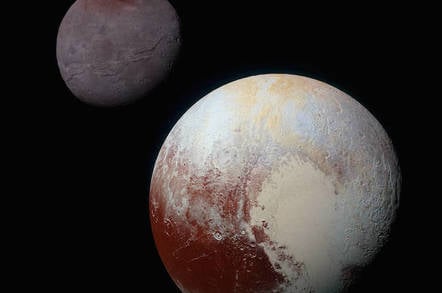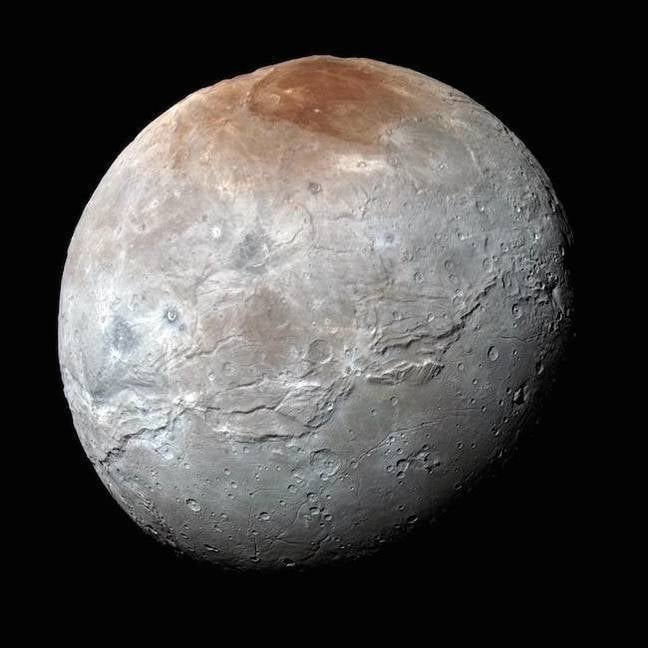Pluto's moon SPLIT OPEN by ancient FROZEN OCEAN
Latest snaps beamed back from New Horizons' craft reveal Charon's violent history

Pics Yet more pictures of Pluto and its moon have been sent back to Earth from NASA's New Horizons spacecraft – this time indicating a colossal geological upset in Charon's past.
The latest spectacular images of the satellite orbiting the remote, icy dwarf planet reveal what NASA boffins have described as "a belt of fractures and canyons".
They added that the huge canyon system stretches more than 1,000 miles (1,600 kilometres) across the entire face of Charon and said that it was likely to continue on the far side of the moon.
John Spencer, deputy lead for GGI at the Southwest Research Institute in Boulder, Colorado said: "It looks like the entire crust of Charon has been split open."
Scientists said that the heavily-disrupted area is four times as long as the Grand Canyon and twice as deep in places.

New Horizons captured this high-resolution enhanced colour view of Charon just before its closest approach on 14 July this year.
Image credit: NASA/JHUAPL/SwRI
The smoothness of plains on Charon, researchers have theorised, may suggest that a type of cold volcanic activity – known as cryovolcanism – had occurred on the moon.
“The team is discussing the possibility that an internal water ocean could have frozen long ago, and the resulting volume change could have led to Charon cracking open, allowing water-based lavas to reach the surface at that time,” said New Horizons' team member Paul Schenk from the Lunar and Planetary Institute in Houston. ®








 User Center
User Center My Training Class
My Training Class Feedback
Feedback











